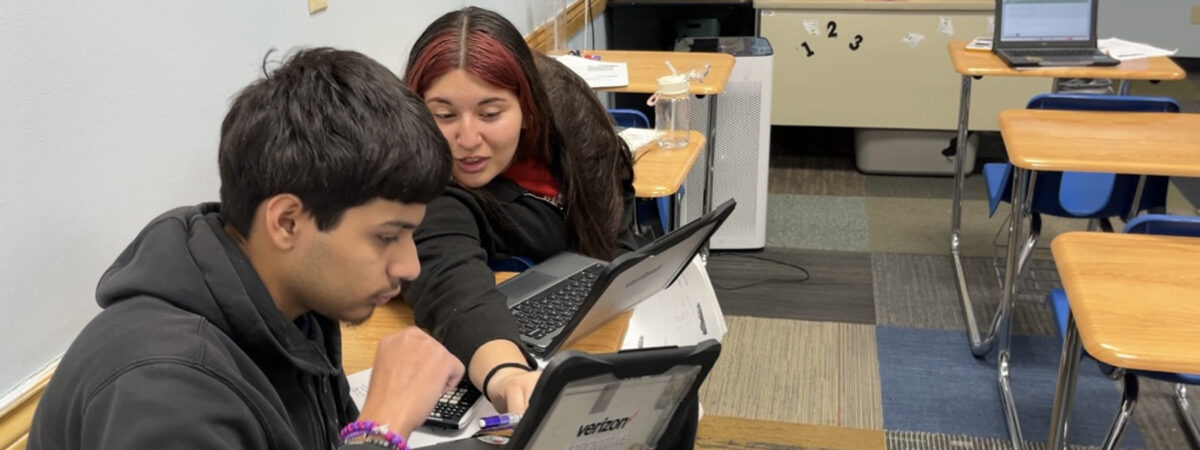
In every classroom I stepped into, students were not only participating—they were leading, actively engaged in their learning and holding themselves and each other accountable. In one classroom, students huddled in small groups, designing their own review quizzes and play-testing them with classmates. In another, a student team passionately debated the best way to present their business pitch in a mock “Shark Tank,” revising their proposal with peer feedback. In math class, students voted to explore trigonometry and co-created anchor charts to support one another’s learning. Everywhere I looked, students were guiding one another, initiating academic conversations, and turning curiosity into creation.
Across all of these classrooms, learners were deciding not just what they explored, but how they engaged with their learning and demonstrated understanding. Teachers acted as facilitators, but the students were the driving force—transforming ideas into tangible products, making real-time decisions, and building a vibrant community of mutual accountability and excitement.
Just a few months ago, learning looked very different. Final student products often looked the same across each classroom, and while students completed assignments, true engagement was inconsistent. Plagiarism had become a concern—not necessarily due to defiance, but because students didn’t feel their voice or process had value. Many felt pressure to produce polished, college-level work without being given the opportunity to express themselves in ways that felt authentic or accessible.
Our Verizon Innovative Learning Schools partnership accelerated our shift toward student-centered learning. By equipping us with the technology, training, and mindset to elevate voice and choice, we were able to reimagine what student ownership can look like. Now, students choose how to design and deliver their best work—infusing their identity, creativity, and confidence into every product. Classrooms no longer sound like quiet compliance; they are alive with curiosity, agency, and shared accountability.
It wasn’t until we paused to reflect with teachers following my observations that the full picture came into focus. During our conversations, a consistent theme emerged: the classrooms buzzing with energy were the ones where students had real ownership. Choice wasn’t just present—it was at the center. Teachers noticed it too. The deeper the choice, the deeper the engagement. This wasn’t a coincidence—student voice and choice were the catalyst.
What I had witnessed in my walkthroughs wasn’t isolated creativity; it was the result of a deliberate shift in practice—one that had quietly taken root and was now transforming learning from the inside out.
Here are just a few powerful examples of what I saw:
Perhaps most striking: despite it being the final stretch of the school year—a time when classrooms often feel a bit chaotic—there was virtually no misbehavior. Students were self-directed, focused, and respectful. They weren’t just compliant; they were motivated.
These observations reaffirm what research and experience consistently tells us: when students are trusted with real choice, they rise to the occasion.
The energy and engagement I witnessed were not anomalies—they were a preview of what’s possible when we embed student choice into the everyday fabric of our instruction. If we can incorporate more opportunities for voice and choice into our highest-leverage daily tasks, especially during core academic time, we’re not only going to see stronger academic outcomes—we’ll also see better behavior, stronger relationships, and more joyful learning environments.
As we begin lesson planning for the next school year, let’s not wait until the final projects to give students ownership. Let’s design with choice in mind from the start.
Because when students have a voice, they don’t just engage—they thrive.
Learn more about Verizon Innovative Learning Schools and how to apply to join our next cohort.
This blog post was written in collaboration with Murissa Mays, the Verizon Innovative Learning Schools coach at Frontier School of Excellence, and Kurt Knueve, an associate director of school impact at Digital Promise.